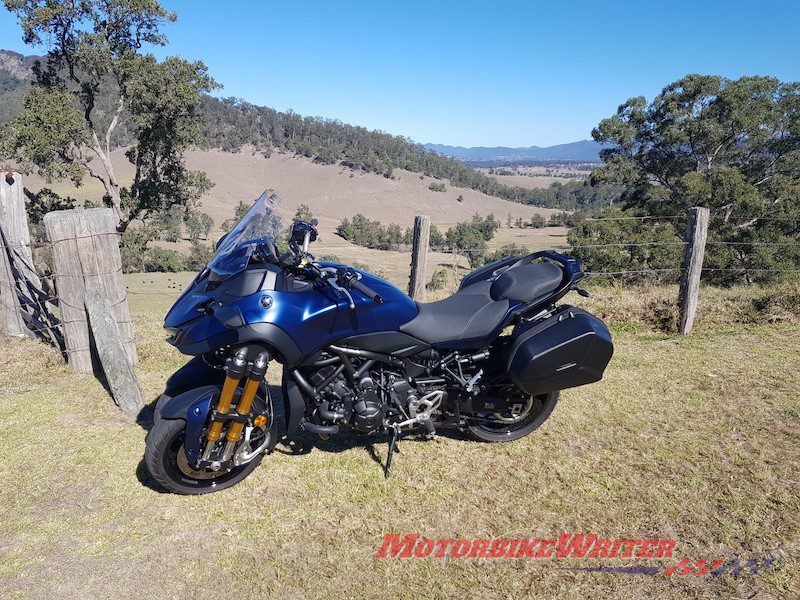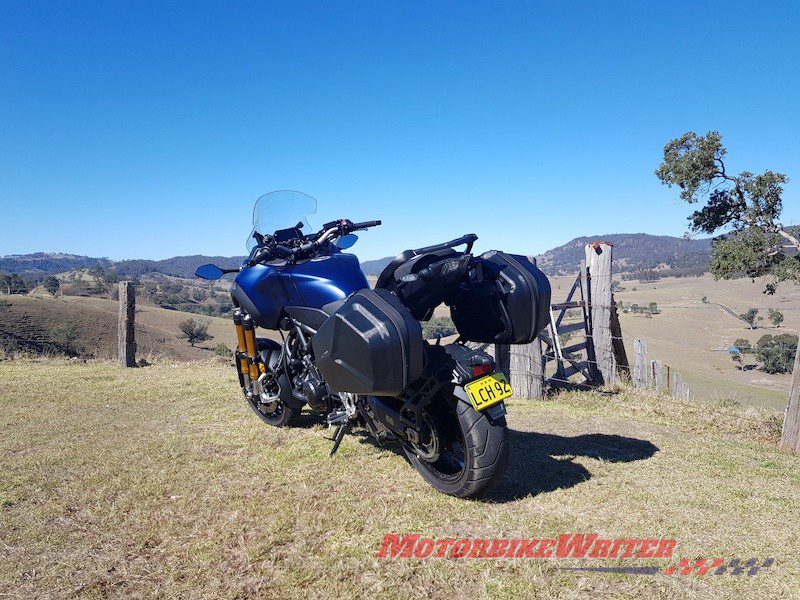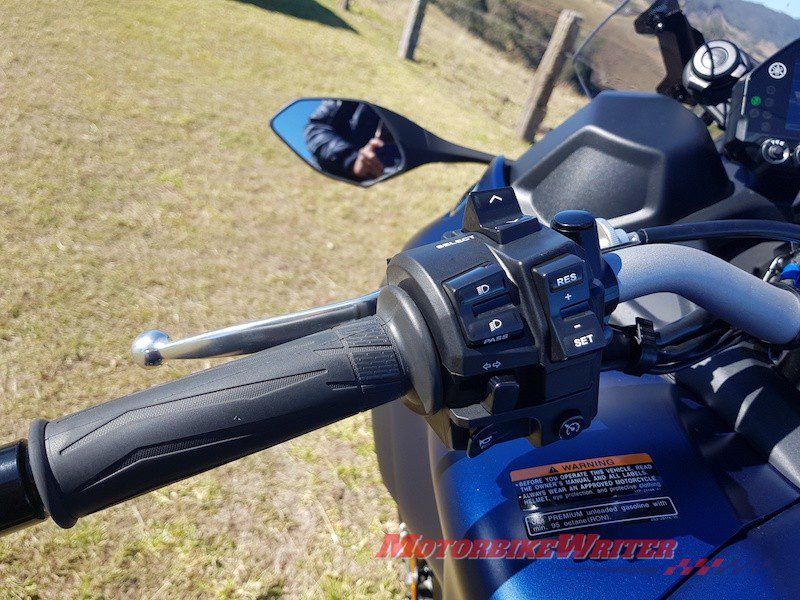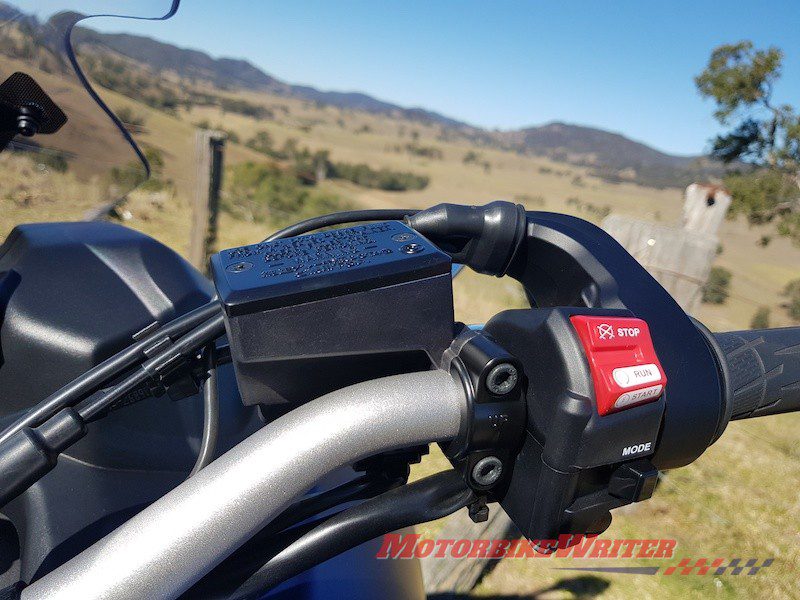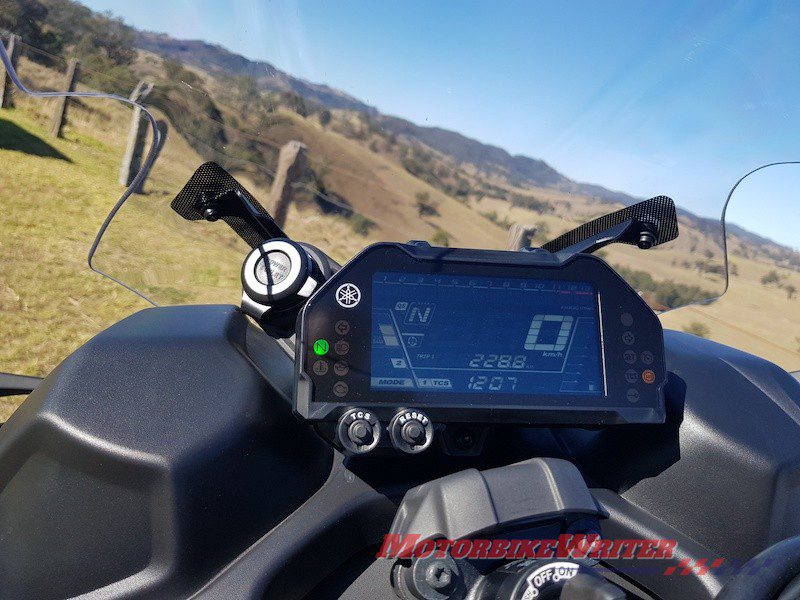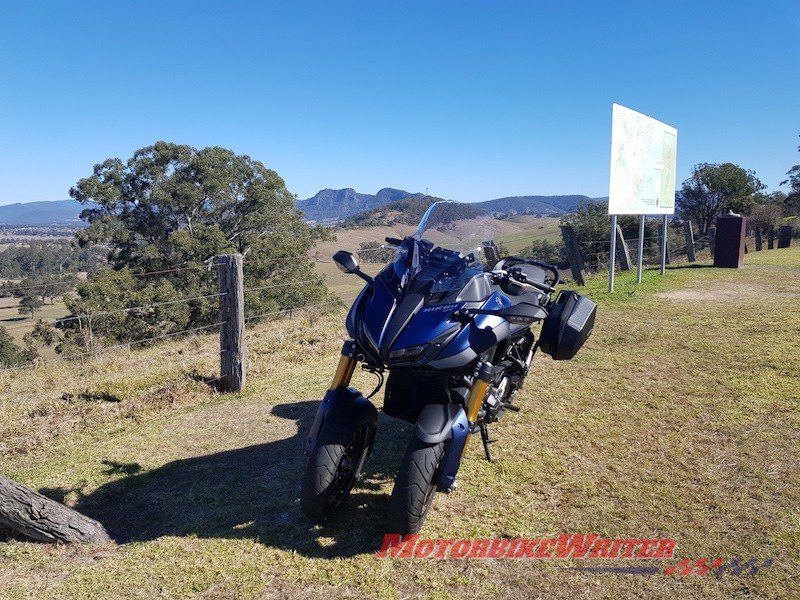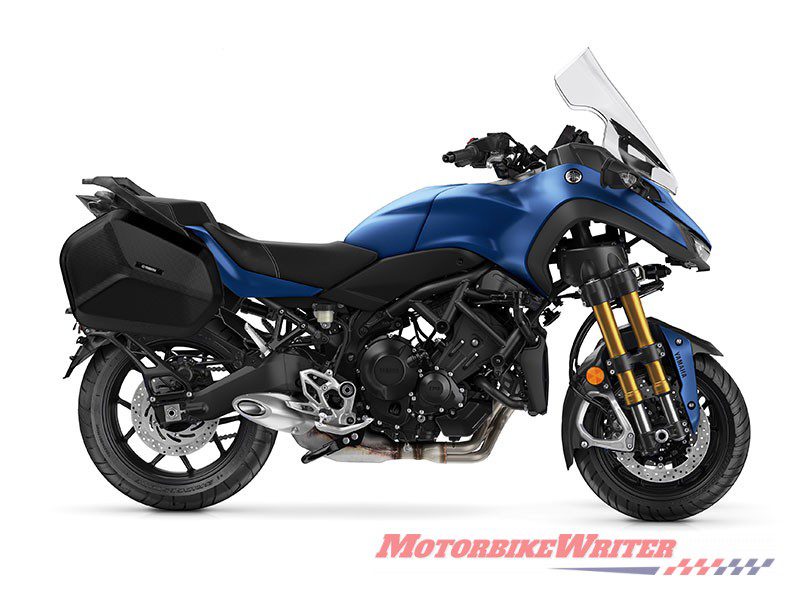Yamaha’s Niken GT three-wheeler looks like an alien, but it corners surprisingly well, says former Ulysses Club magazine editor and long-time bike tester Ian Parks.
When I first set eyes on the Yamaha Niken, I imagined an alien would ride one of these monsters.
This bike is pretty much an MT-09 with two very skilfully engineered front wheels grafted to what would have normally been the pointy end.
Piaggio and other scooter manufacturers (Yamaha’s Tricity included) have proved this concept of ‘doubling’ the front end grip of a cycle.
How many times have we watched motorcycle racing and witnessed a front end loss? The front wheel ‘tucks’ up and chucks its hapless rider down the road.
I tested the original Piaggio MP3 when released, and it was the most sure footed thing I’d ever ridden.
Niken GT test
So, can the three-wheeled Niken service it up to its two-wheeled counterparts?
Apparently it can top around 210km/h and was a full second quicker than its MT-09 sibling, around Yamaha’s test track.
The bike I tested was the $24,478 (+ on-road costs) Niken GT and it can certainly live up to the Grand Tourer standard. It has heated grips, cruise control, touring screen, panniers, shift indicator, selection of three sport modes, traction control, ABS, side and centre stands, comfortable seating position, and wide handle bars.
There’s a six-speed transmission, a 847cc DOHC triple developing 86kW (115HP) at 10,000rpm, kerb weight of a hefty 263kg and high 820mm seat.
The 18 litre fuel tank will give a comfortable range of 300km before the reserve counter kicks in, depending on the engine mode used and how heavily you twist the throttle.
No lessons required
Sitting behind the handle bars gives no indication of what’s in front of you. The fairing may be a bit wider but apart from that nothing seems any different from a standard motorbike.
There is no requirement for tuition on how to ride the Niken. A Can-Am Spyder, outfit or even a trike needs a skill set outside that for riding a normal motorcycle.
You ride a Niken in the exact same way you ride any other bike.
The only differences are a slight noticeable ‘drag’ at slow speed, you can brake later into corners using more front brake and right hand U-turns are a piece of cake. You can even drag the front brake without pulling yourself down.
You do need a side stand and it will fall over if you don’t hold it up.
There are no fancy hydraulics, electronics or sensors, just plain old good quality mechanical engineering.
The mirrors are well positioned and offer good rear and side views without being filled with the rider’s shoulders or arms.
They can be difficult to adjust being so far forward, however, they are positioned in such a way that there is little need to shift the eyeline from the road ahead.
The instrumentation, mirrors and view ahead are virtually all in the same line of sight.
Stability
The one constant while riding this bike is, stability. High speed, low speed, wet grass, gravel, uneven surfaces or cornering, it’s all the same.
There is a complete feeling of confidence that the bike will stay on track and be completely controllable.
I threw it at everything I could think of and it felt like it was on rails at all times. I reckon I’d have to do something completely stupid or idiotic to throw it down the road.
Both front tyres are still planted firmly on the road by the time you are fully grinding the footpegs into the tar.
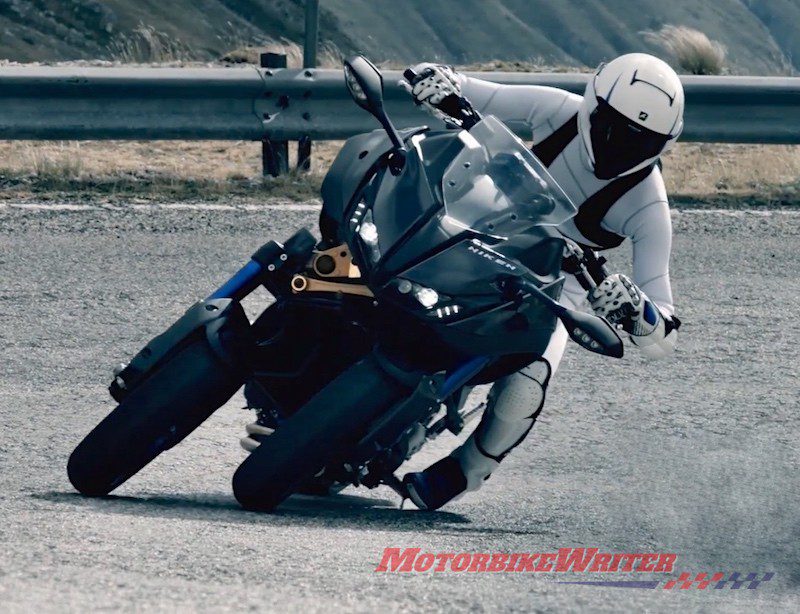
Pillion test
With my treasured pillion onboard we headed off to see what she thought of passenger comfort.
Seat comfort was good, grab rails were well positioned, foot rests not too high.
There was plenty of room for her to shift about. Now, as the rider, I noticed that there was no need for me to compensate for being with a pillion, those small counterbalance shifts a rider makes to keep the bike stable two up, the Niken does it for you. Two up at 10kph….easy…..two up over soft ground and wet grass is a doddle. Amazing!
I’m 180cm tall and 90kg and the 820mm seat height suited me fine. I was able to get both feet flat on the ground and spread out for good support.
The panniers are a little unusual in that they’re a cross between a soft and hard case with zipper closure (they came with a pannier liner bag).
They appear to be a bit on the light side, but, hold about 30 litres securely and can be carried around just like any old set of luggage.
The main downside with the panniers is their exposure to being ‘booted’ when getting on or off the bike. They won’t hold a full face, but will take an open-face helmet.
Apart from the obvious expense of purchasing an extra tyre, my main concern was the “busy” left hand switch block. It takes some time to get used to.
The high beam idiot light is a bit too bright at night, as are the cruise control globes. I’d also prefer some adjustment for the windscreen.
Conclusion
Look beyond the alien appearance and take one for a test ride. It will surprise you as it did me.
Most of my age group couldn’t get past the alien appearance, but a couple of young riders walked up and started taking photos.
Their attention was drawn by the steering mechanism under the front. They thought the bike was pretty cool!
Thanks to Yamaha Australia and Simon from Chris Watson Cessnock for the test bike. The base model starts at $22,438 (+ORC). Options include panniers ($775), brackets ($523) and centre stand ($781).
Yamaha Niken GT
- Price: $24,478 (+ on-road costs)
- Engine: Liquid-cooled, 4-stroke, DOHC, 4-valve, 847cc 3-cylinder
- Bore x Stroke: 78 x 59.1mm
- Compression: 11.5 : 1
- Fuel: 18 litres
- Transmission: Constant mesh 6-speed, chain drive
- Length: 2150mm
- Width: 885mm
- Height: 1425mm
- Seat: 820mm
- Wheelbase: 1510mm
- Clearance: 150mm
- Wet weight: 267kg
- Suspension: USD Telescopic forks, 110m travel; link rear, 125mm travel
- Brakes: Hydraulic dual 298mm discs, 282mm rear disc
- Tyres: 120/70-R15; 190/55-R17


